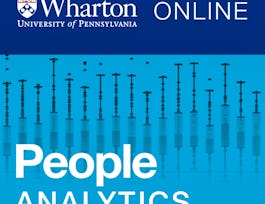This is the fourth of seven courses in the Google Advanced Data Analytics Certificate. In this course, you’ll discover how data professionals use statistics to analyze data and gain important insights. You'll explore key concepts such as descriptive and inferential statistics, probability, sampling, confidence intervals, and hypothesis testing. You'll also learn how to use Python for statistical analysis and practice communicating your findings like a data professional.



The Power of Statistics
This course is part of Google Advanced Data Analytics Professional Certificate

Instructor: Google Career Certificates
Top Instructor
Sponsored by Howard University
55,078 already enrolled
(657 reviews)
What you'll learn
Explore and summarize a dataset
Use probability distributions to model data
Conduct a hypothesis test to identify insights about data
Perform statistical analyses using Python
Details to know

Add to your LinkedIn profile
27 quizzes
See how employees at top companies are mastering in-demand skills

Build your Probability and Statistics expertise
- Learn new concepts from industry experts
- Gain a foundational understanding of a subject or tool
- Develop job-relevant skills with hands-on projects
- Earn a shareable career certificate from Google


Earn a career certificate
Add this credential to your LinkedIn profile, resume, or CV
Share it on social media and in your performance review

There are 6 modules in this course
You’ll explore the role of statistics in data science and identify the difference between descriptive and inferential statistics. You’ll learn how descriptive statistics can help you quickly summarize a dataset and measure the center, spread, and relative position of data.
What's included
12 videos6 readings4 quizzes3 ungraded labs1 plugin
You’ll learn the basic rules for calculating probability for single events. Next, you’ll discover how data professionals use methods such as Bayes’ theorem to describe more complex events. Finally, you’ll learn how probability distributions such as the binomial, Poisson, and normal distribution can help you better understand the structure of data.
What's included
14 videos7 readings6 quizzes3 ungraded labs2 plugins
Data professionals use smaller samples of data to draw conclusions about large datasets. You’ll learn about the different methods they use to collect and analyze sample data and how they avoid sampling bias. You’ll also learn how sampling distributions can help you make accurate estimates.
What's included
11 videos7 readings4 quizzes3 ungraded labs1 plugin
You’ll explore how data professionals use confidence intervals to describe the uncertainty of their estimates. You'll learn how to construct and interpret confidence intervals — and how to avoid some common misinterpretations.
What's included
7 videos3 readings4 quizzes3 ungraded labs
Hypothesis testing helps data professionals determine if the results of a test or experiment are statistically significant or due to chance. You’ll learn about the basic steps for any hypothesis test and how hypothesis testing can help you draw meaningful conclusions about data.
What's included
8 videos8 readings5 quizzes3 ungraded labs
In this end-of-course project, you’ll use statistical methods such as hypothesis testing to analyze a workplace scenario dataset.
What's included
5 videos10 readings4 quizzes6 ungraded labs
Instructor

Offered by
Why people choose Coursera for their career




Learner reviews
Showing 3 of 657
657 reviews
- 5 stars
88.12%
- 4 stars
9.13%
- 3 stars
1.82%
- 2 stars
0.60%
- 1 star
0.30%
Recommended if you're interested in Data Science

University of Pennsylvania

University of Colorado Boulder

Open new doors with Coursera Plus
Unlimited access to 7,000+ world-class courses, hands-on projects, and job-ready certificate programs - all included in your subscription
Advance your career with an online degree
Earn a degree from world-class universities - 100% online
Join over 3,400 global companies that choose Coursera for Business
Upskill your employees to excel in the digital economy



